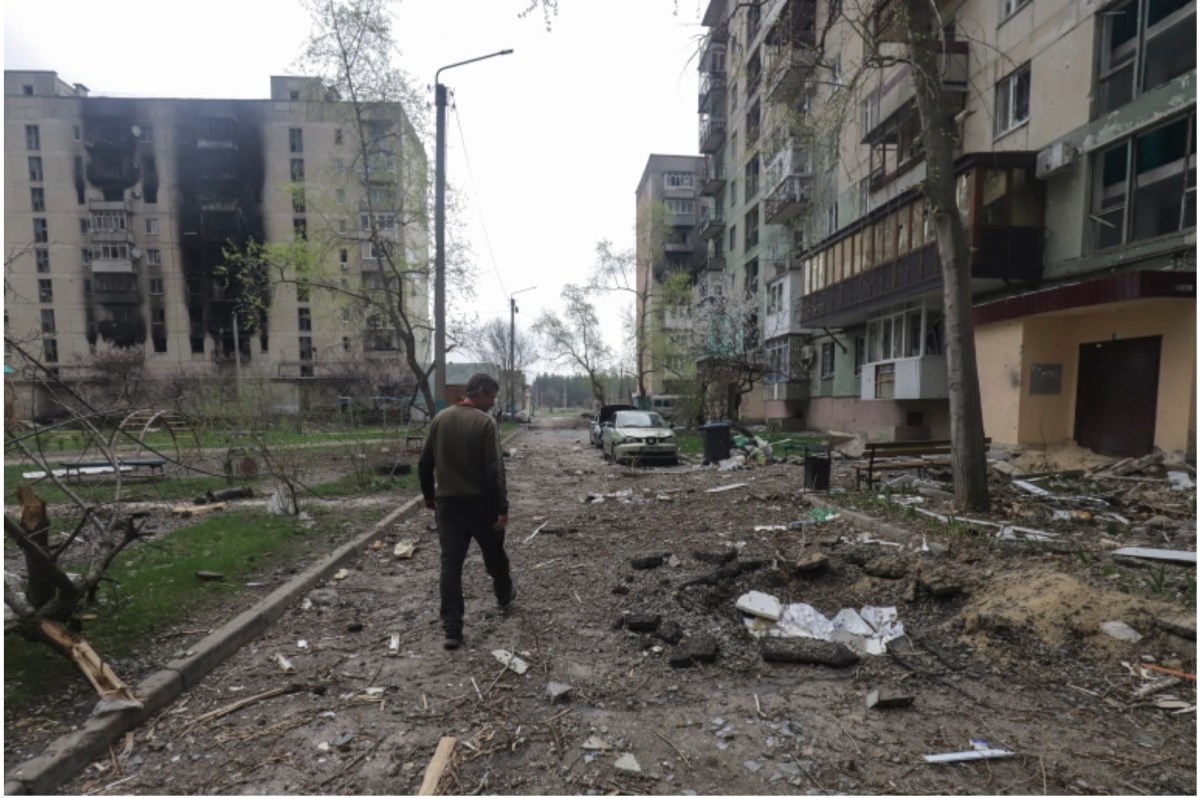Asia Times is initiating a near-daily Ukraine war situation report based on multiple military and think tank sources. It’s our unvarnished bid to cut through the propaganda and misinformation of all sides that contribute to the fog of war.
Summary and overview
The Russian Ministry of Defense says that its forces now control 97% of the city of Severodonetsk.
The situation on a smaller scale strongly resembles the final phase of the Mariupol siege, with hundreds of Ukrainian civilians and troops holed up in the Azot fertilizer plant. The Ukrainian tactic of “fighting for every inch” may be dictated by Kiev for political reasons; militarily it makes little to no sense.
The New York Times reported on Wednesday that the US government has better information on Russian troops in Ukraine than on Ukrainian forces and that Kiev is keeping the US in the dark and possibly even misleading it to protect the rich flow of American military aid into the country.
The paper quotes Beth Sanner, a former CIA officer (35 years of service) and deputy director of national intelligence, saying that the US intelligence community was setting a potential trap for itself.
“We do not talk about whether Ukraine might be able to defeat [the Russians]. And to me, I feel that we are setting ourselves up for another intel failure by not talking about that publicly,” she said.
Of course, for a former senior US intelligence official of the “it’s a slam dunk generation” to claim that US intelligence is groping in the dark is unusual. Might we be seeing the start of the “who lost Ukraine?” debate?
Our overview map below shows where we stand elsewhere in the eastern and southern Ukraine theatre, where 20–25 kilometers separate Russian forces south of Lyman from forces at Popasna before the Donbass salient closes.

At the slow grinding pace adopted by Russian forces, it will take an estimated 10–14 days to close the door.
Simultaneously, a near 80-kilometer gap separates Russian forces south of Izium from forces south of the transport hub of Bakhmut – a substantially great distance which will likely be covered more rapidly when Russian forces eventually reach Sloviansk.
In the south, according to a warning issued yesterday (June 8) by Ukrainian President Volodymyr Zelensky, Russian forces may be preparing to attack the city of Zaporizhzhia as a prelude to extending its southern occupation zone via Kryvyi Rih and Mykolaiv to the strategic port city of Odessa.
The 200-kilometer line from Dnipro in the south to Kharkiv in the northeast defines the principal Ukrainian line of defense against a breakout of Russian forces from the Donbass.
Under United Nations aegis, Russia and Turkey are continuing to negotiate the modalities of grain shipments out of Ukrainian ports. Ultimately, all three parties stand to gain from a deal. Speculation that this could lead to broader peace negotiations appear to be premature, though.
Russian Defense Minister Sergei Shoigu announced the opening of 1,200 kilometers of rail and road lines along the land corridor between Rostov on Don (Russia) and Mariupol. The land connection between Russia and the Crimea is fully functional – as it would have to be for any southern campaign later this summer.
Center/East
Severodonetsk is likely to fall in a matter of days – essentially on the model of Mariupol. Luhansk governor Serhiy Haidai, though noting fierce battles are continuing, suggests that Ukrainian forces are preparing to withdraw to the west.
The only serious issue is whether they will indeed be able to make it out of the salient before the trap closes at the Lyman–Popasna line.
Lysychansk, located on the western bank of the Donets River, opposite Severodonetsk, sits on a small bluff on the river, perhaps 100-150 feet above the water, and is considered to be a more defensible position than Severodonetsk.

But it is vulnerable to Russian forces operating to the south and west. What goes for Severodonetsk goes for Lysychansk: Ukrainian efforts to hold the city will merely make any withdrawal of forces to the west out of the salient more difficult if not impossible.
Aside from Severodonetsk and Lysychansk, the city of Sloviansk is at the greatest risk. But Russian forces have yet to move significant numbers across the Donets River. The timing of that movement is a key element.
South
After making small gains over the past two weeks is the South, Ukrainian forces lost areas near Kherson again as the Russians mopped up territory east of the Inhulets River.
Artillery and rocket attacks continued along much of the line of contact. But none of this is the big one President Zelensky is predicting. There is very little likelihood that the Russians will mount serious moves on Zaporizhzhia or Mykolaiv prior to closing out the Donbass campaign.
And as an American source not hugely impressed with British intelligence notes:
“In a clear indicator that President Putin is in robust health and will continue his stay in office at least another five years, Christopher Steele, former British intelligence officer and avant garde fabulist, said that President Putin will be out of power in three to six months.”


